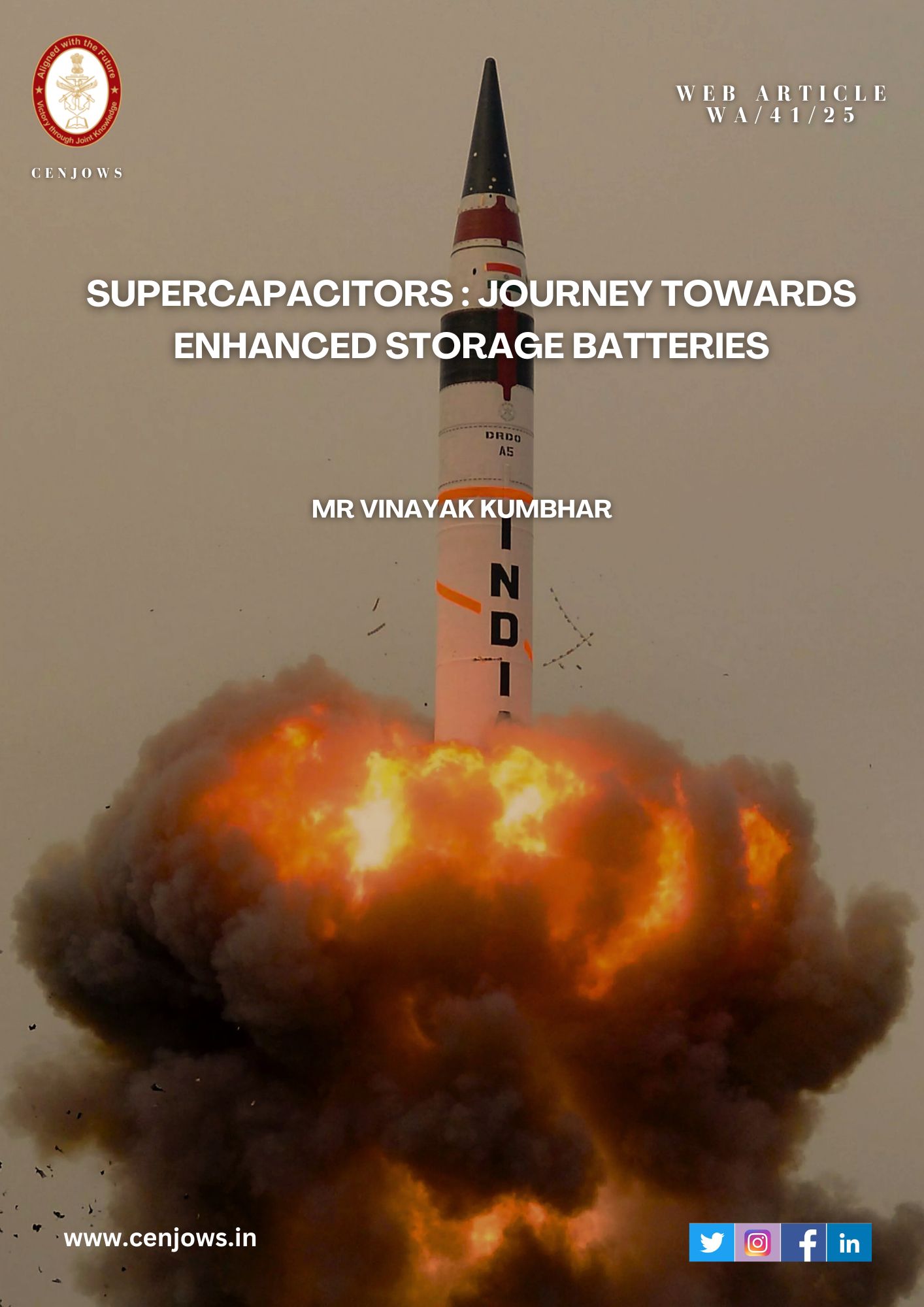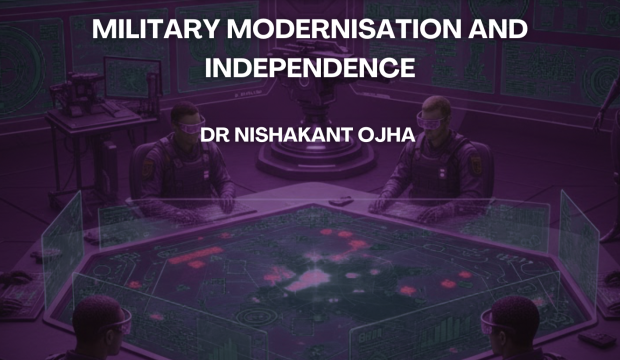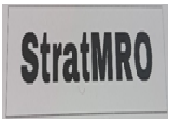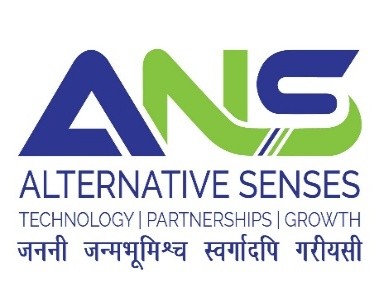Introduction
Historical Background
The concept of supercapacitors has its roots in something known as Electrical Double Layer (EDL) which is the spatial separation of the electronic and ionic charges at an interface where a complex molecular-ionic structure called the electrical double-layer (dedl ~ 1–2 nm) acts as the dielectric thus blocking the charge-transfer (Faradaic process) during polarization using a power source.2 The idea can be traced back to German Physicist Hermann von Helmholtz who in 1853 introduced the same in his study of Colloidal Suspensions in which he proposed that when a charged surface, like a metal electrode is immersed in an electrolyte, ions of opposite charge accumulate at the interface, creating a double layer of charge.3 4 Though purely theoretical and not directly leading to a device, the theory did provide the scientific foundation for upcoming developments. The idea of using the electric double-layer for high-capacitance storage remained unexplored until the mid-20th century.
A breakthrough came when a device that used porous carbon electrodes and an aqueous electrolyte to store charge via the electric double-layer mechanism was developed by Howard Becker of General Electric (GE) was patented in 1957.5 This device was the prototype of what is now known as the Supercapacitor. A further improved version of the electric double-layer capacitor using high-surface-area carbon electrodes and non-aqueous electrolytes, which increased energy storage capacity was developed by Robert A. Rightmire and Donald L. Boos at Standard Oil of Ohio (SOHIO) in 1966.6 A patent was granted to SOHIO in 1970 by the US Patent Office.7 Their supercapacitors were among the first to be tested in practical applications, though they were very bulky and expensive.
Nippon Electric Company (NEC) in 1978 commercialized the first supercapacitor8 for consumer applications, and coined the term “Supercapacitors9” Their supercapacitors were used as a backup power source in electronic devices, such as memory backup in computers. Throughout the 1970s and 1980s, researchers focused on high surface area materials such as Activated carbon and also on non- aqueous electrolytes such as acetonitrile, which increase the operating voltage to boost the energy density of supercapacitors. In the 1990s, the focus was on
Pseudocapacitance (ex. Ruthenium oxide (RuO₂), which combined electric double- layer capacitance with fast, reversible redox reactions at the electrode surface. Brian
- Conway10 was one such scientist who contributed to this field. Since the 2000s, using Nanotechnology, materials like Graphene, Carbon Nanotubes, and metal- organic frameworks (MOF) have been deployed to enhance the performance.
Indian researchers have also made critical strides. Aninda J. Bhattacharyya (IISc Bangalore) developed flexible, solid-state supercapacitors with polymer electrolytes, enhancing lightweight defense electronics and UAVs in collaboration with DRDO. Sagar Mitra (IIT Bombay) advanced graphene-based supercapacitors for high-power drone systems. V. R. Supradeepa (IISc Bangalore) focused on nanostructured electrodes for compact, high-power supercapacitors in defense wearables and satellites. Amartya Mukhopadhyay (IIT Bombay) contributed high-performance carbon-based supercapacitors with enhanced cycle life for DRDO’s missile and UAV systems. Prem Kumar (CSIR-CECRI) innovated polymer-based supercapacitors for flexible soldier-worn systems, while K. S. V. Santhanam (TIFR Mumbai) laid early foundations for electrochemical supercapacitor stability in missile guidance.
Nowadays, supercapacitors are found used in electric vehicles (regenerative braking system), grid energy storage, and, as stated in the beginning, their use as storage batteries in the aerospace defence domain is also being looked at in a detailed way.
Principle and Mechanism

(Schematic diagram of
- (a) an electrical double layer capacitor and
- (b) a pseudo capacitor.)
Supercapacitors in Aerospace and Defense:
Supercapacitors excel in aerospace and defense due to their high power density, rapid charge-discharge of 1–10 seconds, long lifespan of about 10^6 cycles, and being able to operate in extreme conditions like -40°C to +70°C.12 The first supercapacitor was developed for military applications by a research institute in the USA in the year 1982.13 In 2005, for the first time, supercapacitors were used to power emergency actuators in commercial airlines in Germany by Diehl Luftfahrt Elektronik GmbH, an aerospace systems and controls company.14 They potentially replace conventional storage batteries in: (a)Satellites, where they stabilize power in low-orbit satellites, and provide high-pulse-current needed for interplanetary missions. Apart from this, they provide burst power for communication systems, actuators, and separation mechanisms (b). Missile Systems, in which they deliver rapid energy for a short duration, can replace batteries in Power guidance systems, magnetic coil guns, and laser systems. They support phased array radar antennae and backup power for airbag deployment in vehicles while ensuring reliability under peak loads. (c)Unmanned Aerial Vehicles (UAVs) reduce battery weight, enhance endurance, and facilitate lightweight propulsion.
Comparison with Conventional storage batteries:15
Using supercapacitors over conventional storage batteries has its own advantages and challenges. They are listed below.
Aspect | Supercapacitors | Conventional Batteries (e.g., Li-ion, NiCd, Lead-Acid) |
Energy Density | Lower (5-10 Wh/kg). Stores less energy per unit weight. | Higher (100-250 Wh/kg). Better for long-term energy storage. |
Power Density | Delivers rapid bursts of power for quick response systems. | Lower (300-1000 W/kg). Slower discharge rates. |
Discharge Speed | Very fast (seconds to minutes). Ideal for rapid cycling in defense applications. | Slower (hours). Not suited for rapid charge-discharge cycles. |
Cycle Life | Extremely high (100,000 to 1,000,000 cycles). Durable for frequent use. | Moderate (500-2,000 cycles). Degrades faster with heavy cycling. |
Temperature Range | Wide (-40°C to 65°C). Reliable in extreme aerospace environments. | Narrower (0°C to 45°C for Li-ion). Performance drops in extreme conditions. |
Weight | Lighter for equivalent power output. Beneficial for weight- critical aerospace systems. | Heavier. Impacts the payload capacity in aircraft or satellites. |
Maintenance | Low. No chemical degradation, minimal upkeep. | Higher. Requires monitoring for degradation and safety risks. |
Safety | Safer. No risk of thermal runaway or toxic leaks. | Risk of thermal runaway, leaks, or explosions (especially Li-ion). |
Lifespan | Long (10-20 years). Suitable for long-term defense applications. | Shorter (3-10 years). Requires more frequent replacements. |
Cost | Higher upfront cost. But lower lifecycle cost due to durability. | Lower initial cost. Higher replacement and maintenance costs. |
Applications in Aerospace Defense | Pulse power for radar, laser systems, electromagnetic weapons, and backup power. | Primary power for drones, satellites, and long-duration missions. |
Environmental Impact | Lower. Fewer toxic materials, recyclable components. | Higher. Contains heavy metals and complex disposal processes. |
Fig 1: Advantages
Aspect | Supercapacitors/Ultracapacitors | Conventional Batteries (e.g., Li-ion, NiCd, Lead- Acid) |
Energy Density | Low (5-10 Wh/kg). Limited energy storage capacity restricts use for long-duration missions. | High (100-250 Wh/kg). Supports extended operation without frequent recharging. |
Self-Discharge Rate | High (up to 20% per day). Loses charge quickly when idle, which is problematic for standby systems. | Low (1-5% per month for Li-ion). Retains charge longer for dormant applications. |
Voltage Characteristics | Linear voltage drop during discharge. Requires complex power management systems. | Stable voltage output. Simpler integration with existing electronics. |
Cost | High initial cost. Expensive materials and manufacturing increase system costs. | Lower initial cost. Economies of scale make batteries more affordable. |
Scalability | Limited for high-energy applications. Requires multiple units, increasing complexity. | Highly scalable. Single units can meet high- energy demands efficiently. |
Thermal Management | Less sensitive to temperature but may require cooling for high-power applications. | Sensitive to overheating. |
Requires robust thermal management to prevent failure. | ||
Integration Complexity | Requires specialized electronics for voltage regulation and energy management. | Standardized integration. Widely compatible with existing aerospace systems. |
Maturity of Technology | Less mature. Fewer proven applications in aerospace defense compared to batteries. | Mature. Extensively tested and deployed in aerospace and defense systems. |
Charging Infrastructure | Needs high-power charging systems. Less common in existing aerospace setups. | Compatible with standard charging systems available in the industry. |
Size and Volume | Larger volume for equivalent energy storage. Challenging for space-constrained systems. | Compact for high-energy needs. Better suited for tight aerospace designs. |
Global market trends
The global market for supercapacitors as storage batteries in aerospace and defense has grown and is growing rapidly, because of their high-power density and reliability in extreme conditions. Valued at $4.7 billion in 2022, the market is projected to reach
$29.2 billion by 2032, with a CAGR of about 20%.16 Due to the increase in demand for lightweight energy storage in aircraft and defense systems. Supercapacitors power emergency systems, avionics, and More Electric Aircraft (MEA), enhancing efficiency, while defense applications like EMALS, laser weapons, and radar rely on their high- pulse capabilities. Advances in graphene-based supercapacitors aim to boost energy density and cut costs by 40% by 2030. Despite challenges with lower energy density compared to batteries, ongoing R&D is expanding their role in aerospace and defense.
Leading Countries in Supercapacitor usage in Aerospace defense:
Due to their high-power density, rapid charge-discharge capabilities, and reliability in extreme conditions, many leading countries across the globe have deployed them in their aerospace defense sector. A few of them have been listed below:
Country | Company | Important Inventions | Aircraft/Systems with Supercapacitors | First Deployment | Most Recent Deployment |
United States | Maxwell Technologies (Tesla), Evans Capacitor Company, Knowles Precision Devices | High-power supercapacit or-battery hybrids, radar and laser targeting, for CubeSats and high- reliability pulse power systems. | GPS-guided missiles, avionics backup systems, CubeSats, phased array radar systems, electromagnetic railguns, laser weapon systems | 1982 (high-power supercapacit ors for military applications) | 2024 (ongoing use in CubeSats and laser weapon systems) |
China | Nantong Jianghai Capacitor Co. | In electro- magnetic aircraft launch systems (EMALS), high-pulse laser weapons. | Aircraft carrier EMALS, UAV launchers, laser, and microwave weapon systems | around 2010 (in EMALS) | 2024 (laser and microwave weapon systems) |
Russia | Research institutes | Supercapacit ors for laser weapon systems, high-power radar applications | Laser weapon systems, phased array radar, avionics displays | around 2000, (in laser weapon research) | 2023 (modernized laser weapon systems) |
India | SPEL Technologies | Graphene- based supercapacit ors, lithium- ion hybrid systems for aircraft power management | Airbus A380 (emergency door operations, power management), GPS-guided missiles, battle tank systems | around 2008 (in Airbus A380 for emergency systems) | 2024 In missiles and other defense products |
European Union (France, Germany) | Airbus Defense and Space, CAP- XX Limited, Nesscap (Maxwell) | COTS supercapacit ors for satellite power systems, emergency power for aircraft actuators | Airbus A380 (emergency door operations, evacuation slides), ESA satellites, CubeSats, electrical thrust vector control systems | 2008 (in Airbus A380 for emergency systems) | 2024 (ESA satellite and CubeSat applications) |
Fig 3: Countries with super capacitor Technology
Conclusion
Supercapacitors are bringing about a transformative change in energy storage in aerospace and defense due to their high power, fast charging, and ability to work in extreme conditions. Unlike traditional batteries, they offer safer, lighter, and more durable solutions, making them ideal for emergency systems, avionics, and high-pulse applications like radar, laser weapons, and electromagnetic launch systems. The global market is growing fast, from $4.7 billion in 2022 to a projected $29.2 billion by 2032, driven by demand for efficient, lightweight systems in aircraft and defense. Countries like the United States, China, India, Russia, and the European Union are leading, with innovations from companies like Maxwell Technologies and SPEL Technologies. Advances in materials like graphene promise higher energy storage and lower costs by 2030. However, challenges like low energy density and high costs remain, requiring ongoing research to compete with batteries for long-term missions.
As technology improves, supercapacitors will play a bigger role in More Electric Aircraft, satellites, and defense systems, ensuring safer, more efficient, and sustainable solutions for the future, meeting the needs of modern aviation and military applications.
DISCLAIMER
The paper is author’s individual scholastic articulation and does not necessarily reflect the views of CENJOWS. The author certifies that the article is original in content, unpublished and it has not been submitted for publication/ web upload elsewhere and that the facts and figures quoted are duly referenced, as needed and are believed to be correct.
References
- Battery University. 2010. “BU-209: How Does a Supercapacitor Work?” Battery University. September 11, 2010 https://batteryuniversity.com/article/bu-209-how-does-a-supercapacitor-work
- Da Silva, Leonardo M., Reinaldo Cesar, Cássio M.R. Moreira, Jéferson H.M. Santos, Lindomar G. De Souza, Bruno Morandi Pires, Rafael Vicentini, Willian Nunes, and Hudson Zanin. 2020. “Reviewing the Fundamentals of Supercapacitors and the Difficulties Involving the Analysis of the Electrochemical Findings Obtained for Porous Electrode Materials.” Energy Storage Materials 27 (May): 555–90. https://doi.org/10.1016/j.ensm.2019.12.015.
- “Lecture #18 of 20+.” n.d. Accessed July 3, 2025. https://www.chem.uci.edu/~ardo/echem/UCI-CHEM248-2023F_lecture18.pdf.
- University of Cambridge. 2013. “The Electrical Double Layer.” Www.ceb.cam.ac.uk. November 14, 2013. https://www.ceb.cam.ac.uk/research/groups/rg-eme/Edu/the-electrical- double-layer.
- Becker, Howard I., and Vischers Ferry. 1954. LOW VOLTAGE ELECTROLYTIC CAPACITOR. United States Patent Office, issued April 14, 1954.
- madangk. 2025. “Brief History of Supercapacitors.” Scribd. 2025.
https://www.scribd.com/doc/126907280/Brief-History-of-Supercapacitors.
Boos, Donald L., Garfield Heights, and Standard Oil Company, Cleveland, Ohio. 1968. ELECTROLYTIC CAPACITORS HAVING CARBON PASTE ELECTRODES. United States Patent Office, issued May 29, 1968.
S Ravivarman. 2019. “Supercapacitors Past, Present, and Future.” S Ravivarman. February 2, 2019. https://sravivarman.com/technical-articles/supercapacitors-past-present- and-future/.
Battery University. 2010. “BU-209: How Does a Supercapacitor Work?” Battery University. September 11, 2010. https://batteryuniversity.com/article/bu-209-how-does-a- supercapacitor-work.
MacDougall, B. R. 2014. “ECS Classics: Brian Conway Remembered.” Interface Magazine
23 (1): 34–36. https://doi.org/10.1149/2.f01141if.
Kumar Sahoo, Prasanta, Chi-Ang Tseng, Yi-June Huang, and Chuan-Pei Lee. 2021. “Carbon-Based Nanocomposite Materials for High-Performance Supercapacitors.” Novel Nanomaterials, June. https://doi.org/10.5772/intechopen.95460.
Rashmi, Tanya. 2025. “Supercapacitors with Higher Energy Density: Bridging the Gap between Power and Energy.” Electronics Buzz. May 28, 2025. https://electronicsbuzz.in/supercapacitors-with-higher-energy-density-bridging-the-gap- between-power-and-energy/.
“SPEL | Aerospace Supercapacitor, Aeroplane, Space, India, Spel, Lithium Ion Battery, Graphene, Supercapacitors, Super Capacitors, Ultracapacitors, Edlc, Bms.” 2025. Capacitorsite.com. 2025. https://capacitorsite.com/defence.html.
Chaudhari Jainish. 2025. “PPT10-Super and Ultracapacitor-Ppt.” Scribd. 2025. https://www.scribd.com/document/556074119/PPT10-super-and-ultracapacitor-ppt.
Matthews, Peter. 2024. “Supercapacitors vs. Batteries: A Comparison in Energy Storage Solutions.” Knowlescapacitors.com. Knowles Precision Devices. September 18, 2024. https://blog.knowlescapacitors.com/blog/supercapacitors-vs.-batteries-a-comparison-in- energy-storage-solutions.
“MarketsandMarkets.” 2019. Marketsandmarkets.com. 2019. https://www.marketsandmarkets.com/search.asp?search=supercapacitors.

Vinayak Kumbar
is a Technical Research Assistant at CENJOWS














































